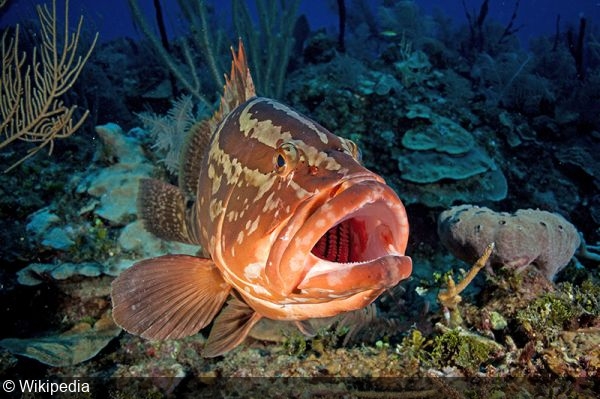97% of Fish Listed Under the Convention on the Conservation of Migratory Species Face Extinction Risk

UN Report: 97% of Fish Listed Under the Convention on the Conservation of Migratory Species Face Extinction Risk
Source: BBC
A new United Nations report on the “State of the World’s Migratory Species” has found, of the 1,189 species assessed, one in five is threatened with extinction and 44% have a decreasing population trend. The report is the first of its kind since the Convention on the Conservation of Migratory Species of Wild Animals (CMS) came into effect in 1983, more than 40 years ago. There are currently 131 member states to the convention.
Even more concerning, however, is the situation in aquatic ecosystems: Shockingly, 97% of fish listed under the convention are at risk of extinction. Examples include the Critically Endangered Nassau grouper (pictured above), whose populations are highly vulnerable to overfishing at spawning aggregation sites; the Critically Endangered oceanic whitetip shark, which is threatened by overfishing as well as incidental catch; and cetaceans such as orcas and harbor porpoises, which are adversely affected by noise from shipping and sonar. There are a total of 28 CMS-listed fish species that are categorized as Critically Endangered.
While most CMS-listed species are showing either an average increase or a stable trend in population abundance since 1970 (Figure 2.8), migratory fish show a dramatically downward trend in population abundance, with a very worrying average decline of 90%. Furthermore, average declines of CMS-listed species are highest in Asia, with a decline of some 66%, followed by Oceania (37%) and Africa (27%).
Despite the grim numbers in the report, there is cause for optimism: Thanks to conservation efforts, some species have seen their populations climb. For example, the western South Atlantic population of humpback whales, following a sharp decline from a pre-whaling abundance of 27,000 individuals to just 450 individuals in the mid-1950s, has been estimated to have recovered to approximately 93% of its pre-whaling population size—around 25,000 animals. In addition, as the report concludes, the main drivers of population declines and species loss are known—and so too are the solutions.
You can download the “State of the World’s Migratory Species” in PDF form from here.






